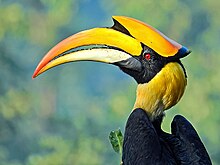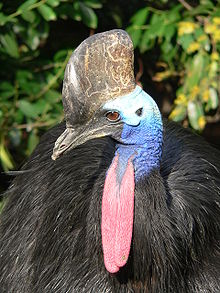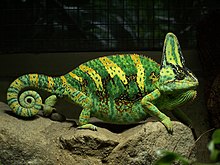


A casque is an anatomical feature found in some species of birds, reptiles, and amphibians. In birds, it is an enlargement of the bones of the upper mandible or the skull, either on the front of the face, or the top of the head, or both. The casque has been hypothesized to serve as a visual cue to a bird's sex, state of maturity, or social status; as reinforcement to the beak's structure; or as a resonance chamber, enhancing calls.[4] In addition, they may be used in combat with other members of the same species, in the gathering of food, or in thermoregulation.
- ^ Eastick et al. 2019.
- ^ Bauerová, Kratochvíl & Kubička 2020.
- ^ Badger 2006, p. 19.
- ^ Gamble 2007, p. 38.